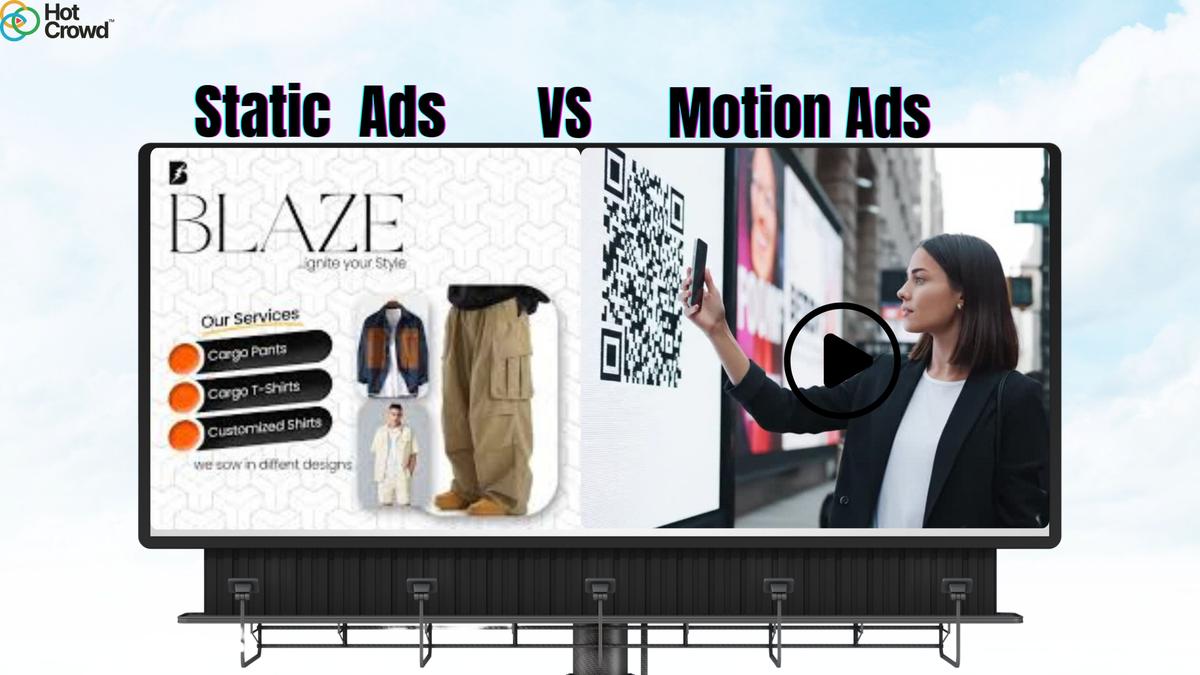Motion Ads VS Static Ads on Digital Billboard: Which Works Better for Brands?
Gift - Tue Sep 16 2025

Digital billboards have changed the game in outdoor advertising. They’ve taken what used to be flat, paper-based posters and turned them into dynamic storytelling platforms. But with that transformation comes a big question every brand face: Should you run motion ads or stick to static visuals?
Both have their advantages, and the answer isn’t always one-size-fits-all. Let’s break it down in simple terms so you can decide which strategy aligns with your goals.
What is a Static Ad on a Digital Billboard?
A static ad is essentially a digital version of a traditional poster. It’s a single, non-moving image displayed on the screen.
Benefits of Static Ads:
- Simplicity: Easy to design and digest at a glance.
- Cost-effective: Often cheaper to produce and operate.
- Clear messaging: No distractions; viewers see your core message instantly.
- Longer dwell time: Static ads usually stay on the screen longer in a rotation, increasing exposure.
Best Use Cases:
- Local businesses announcing sales or promotions.
- Restaurants highlighting a menu special.
- Political or nonprofit campaigns that need simple, direct messaging
What is a Motion Ad on a Digital Billboard?
A motion ad uses movement, animations, short videos or transitions to grab attention. It’s closer to a mini commercial displayed outdoors.
Benefits of Motion Ads:
- High attention value: Movement naturally draws the human eye.
- Storytelling power: Great for showing transformations, demos or before-and-after effects.
- Memorable: Motion content tends to stick in people’s minds longer.
- Versatility: Brands can repurpose their social media video ads for digital billboards.
Best Use Cases:
- Product launches that need to stand out.
- Entertainment events (concerts, movies, sports).
- Tech and fashion brands showcasing lifestyle experiences.
Which Works Better for Brands?
The truth is, it depends on your campaign goals.
- Audience Attention Span: In fast-moving areas, static may perform better. In high-dwell-time areas (like bus stops or shopping malls), motion shines.
- Budget: Motion costs more to produce, but can deliver higher engagement. Static offers simplicity at a lower price.
- Campaign Goals: If you want to wow and tell a story, motion is your best bet. If you need to stick in people’s minds quickly, static works wonders
- If your goal is brand awareness motion ads usually outperform. Research shows that moving visuals increase recall rates and engagement compared to static imagery.
- If your goal is simplicity and clarity, especially for short messages like “50% Off This Weekend,” a static ad can be more effective.
A smart approach many brands use is a hybrid strategy: lead with motion to grab attention, then conclude with a static slide featuring your logo, offer or call-to-action.
Pro Tip: Blend Both for Maximum Impact
Many successful brands run hybrid strategies: start with a static “hook” that introduces the brand, followed by a motion sequence that dives deeper. This way, you capture glances and engage those who stick around.
If you’re a local business, test both formats. Run a static ad for one week and a motion ad the next, then track customer engagement or sales lift. Data will tell you what works best for your brand.
Final Thoughts
Digital billboards give the brands flexibility that traditional posters never could. The choice between motion and static isn’t about which is “better,” but rather which aligns with your campaign goals, budget, and audience behavior.
- Want to tell a story and spark emotion? Go with motion.
- Want to deliver a sharp, clear, unforgettable message? Stick to static.
- Want the best of both worlds? Blend the two.
Utimately, the brand that understance its audience and utilizes the medium effectively is the real winner.